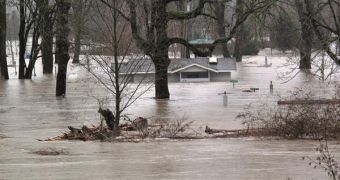According to scientific predictions, the rising incidence of global warming-related phenomena, such as intense and powerful storms, floods and droughts, will force millions of people out of their homes, located in areas more prone to feeling these effects of climate change. As the atmosphere becomes clogged with carbon dioxide, the imbalances that are created will generate abnormal weather events, of a never-before-seen strength.
In the latest issue of the International Journal of Mathematics and Operational Research, scientists have published a mathematical model, which is meant to help these individuals relocate as safely and fast as possible, when the threats become real.
One of the population segments most at risk is that now living in semi-arid regions, which will turn into desert in a couple of decades, with soils unable to support even the most basic forms of agriculture in the absence of irrigation systems. Constructing such watering systems in areas of the world that are already short on the stuff will be close to impossible, analysts fear, so the only remaining option is for these people to move from their homes to a more hospitable land.
The goal of the new mathematical model is to give authorities in regions affected by the changes an effective tool in estimating how many individuals will have to be moved when their lands become uninhabitable, and also how many citizens can be left behind on the drying land, for adaptation to the new environment. It goes without saying that there will certainly be those who will not want to leave their ancestors' lands and who will stay behind, no matter what. The new model is looking at making sure that officials make the most informed decisions possible under the future circumstances.
Canadian decision scientist Sajjad Zahir, from the the University of Lethbridge in Alberta, has worked together with colleagues from the University of New South Wales and the Lethbridge Community Network for the completion of this model. It takes into account a lot of factors, such as people's preferences for a certain type of action, as well as the various costs that are involved in such massive population movements, and provides an economically viable way of relocating the individuals.
“To make adaptation a success, part of the population must be prepared to adapt to new or different work opportunities and living conditions and others may have to be relocated in a planned way to new locations that require accepting different working and environmental conditions. Our methodology lets us find the fraction of people who would be relocated and who would stay in an optimal manner,” the study concludes.

 14 DAY TRIAL //
14 DAY TRIAL //